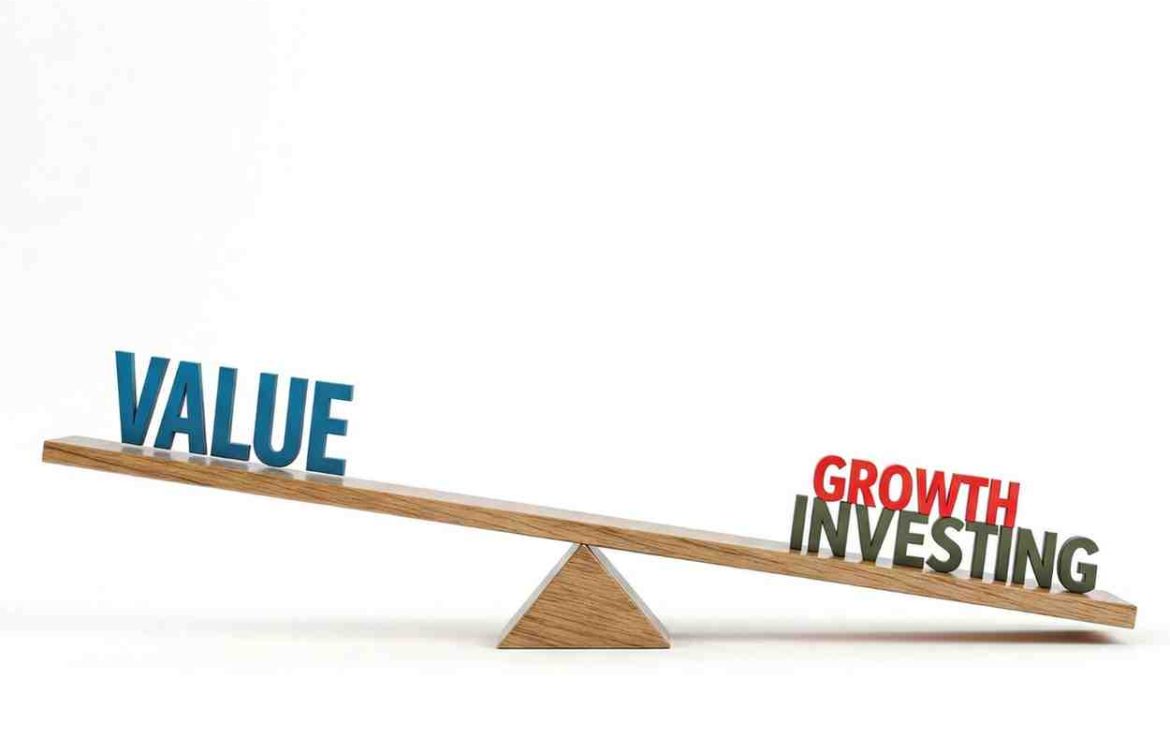
Growth Investing vs. Value Investing: Which Strategy Is Right for You?
Growth Investing vs. Value Investing: Which Strategy Is Right for You?
The equity market stands as a pivotal vehicle for wealth creation, offering individuals the opportunity to participate in the growth of publicly traded companies. At its core, the stock market facilitates the buying and selling of stocks, or shares, which represent ownership in these enterprises. Within this dynamic landscape, diverse approaches to equity investing emerge, with growth and value investing being two prominent strategies. Understanding these methodologies is crucial for informed participation in financial markets. This blog aims to provide a balanced overview of growth and value investing, assisting readers in determining which strategy aligns with their individual financial goals and risk tolerance.
Thank you for reading this post, don't forget to subscribe!What is the equity market and how does it work?
The stock exchange serves as the central platform for the buying and selling of securities, including stocks and bonds. Market capitalization, calculated by multiplying the current share price by the total number of outstanding shares, provides a metric for assessing company size. The primary market is where companies issue new securities, while the secondary market facilitates the trading of previously issued securities between investors. Understanding this distinction is fundamental to navigating the equity market. For further insights, explore “Equity Market: What It Is, How It Works, Types, and Examples.”
Best equity investment strategies for long-term growth.
Growth investing focuses on identifying and investing in growth stocks, which are those exhibiting above-average earnings growth compared to their industry or the broader market. These companies typically reinvest their earnings back into the business, prioritizing innovation and expansion. The emphasis is on future potential rather than current valuation, making growth investing inherently riskier due to potential volatility. For example, a tech company developing cutting-edge AI solutions might be considered a growth stock. Identifying such stocks involves analyzing revenue growth, earnings projections, and the company’s competitive advantage.
Value investing: A strategy for discerning undervalued shares.
Value investing, conversely, involves purchasing stocks priced below their intrinsic value. This strategy emphasizes fundamental analysis, including scrutinizing financial ratios like price-to-earnings (P/E) and price-to-book (P/B), and meticulously reviewing company financials. Value investors prefer companies with strong balance sheets, consistent earnings, and a history of stable performance. While growth may be slower, value investing offers greater downside protection. A classic example might be a well-established industrial company with solid financials but temporarily depressed stock prices. Identifying these undervalued shares requires detailed financial analysis and a deep understanding of the company’s intrinsic worth.
Growth stocks versus dividend stocks: Distinguishing investment approaches.
Growth and value investing diverge significantly in terms of risk, return, and time horizon. Growth investing targets high returns through capital appreciation, accepting higher risk and a longer time horizon. Value investing seeks steady returns and downside protection through undervalued assets, often with a shorter to medium-term horizon. Dividend stocks, which pay out a portion of their earnings to shareholders, are often associated with value investing. They provide a source of income and can enhance total returns, contributing to a more conservative investment approach. Trading stocks can be applied to both strategies, with growth investors focusing on momentum and value investors on identifying price discrepancies.
How do interest rates affect the equity market?
Interest rates and stock market performance are often inversely correlated. Rising interest rates can increase borrowing costs for companies and reduce consumer spending, potentially dampening earnings and stock prices. Conversely, lower interest rates can stimulate economic activity and boost stock market performance. Additionally, macroeconomic factors like inflation, GDP growth, and geopolitical events significantly impact investment decisions.
What are the risks of investing in emerging equity markets?
Equity investing inherently carries risks, including market fluctuations, company-specific factors, and economic downturns. Emerging equity markets present unique challenges, such as political instability, currency volatility, and regulatory uncertainties. However, they also offer significant growth potential. Understanding the difference between the primary and secondary equity markets is crucial in assessing risk. Primary market investments, like IPOs, can be highly volatile, while secondary market trades are influenced by broader market conditions.
How to start investing in the equity market for beginners.
For novice investors, education and diversification are paramount. Begin by understanding basic investment concepts, researching different asset classes, and developing a long-term perspective. Diversification across various sectors and asset classes can mitigate risk. Utilize reputable online resources, financial publications, and educational platforms to enhance your knowledge. For further exploration, refer to “What is an Equity Share? How to Invest in Equity Shares?”
Conclusion
In summary, growth investing focuses on high-potential companies with rapid earnings growth, while value investing targets undervalued companies with strong fundamentals. The optimal investment strategy depends on individual circumstances, including risk tolerance, financial goals, and time horizon. Conduct thorough research, consider your risk appetite, and seek professional advice before making investment decisions.
Related Blogs:
Commodity vs Equity Market: A Beginner’s Guide to Understanding the Differences
Equity Market: What It Is, How It Works, Types, and Examples
A Guide to Value Investing in 2025
Value Investing as a Stock Market Investing Strategy in 2025
Disclaimer: This blog post is intended for informational purposes only and should not be considered financial advice. The financial data presented is subject to change over time, and the securities mentioned are examples only and do not constitute investment recommendations. Always conduct thorough research and consult with a qualified financial advisor before making any investment decisions.

